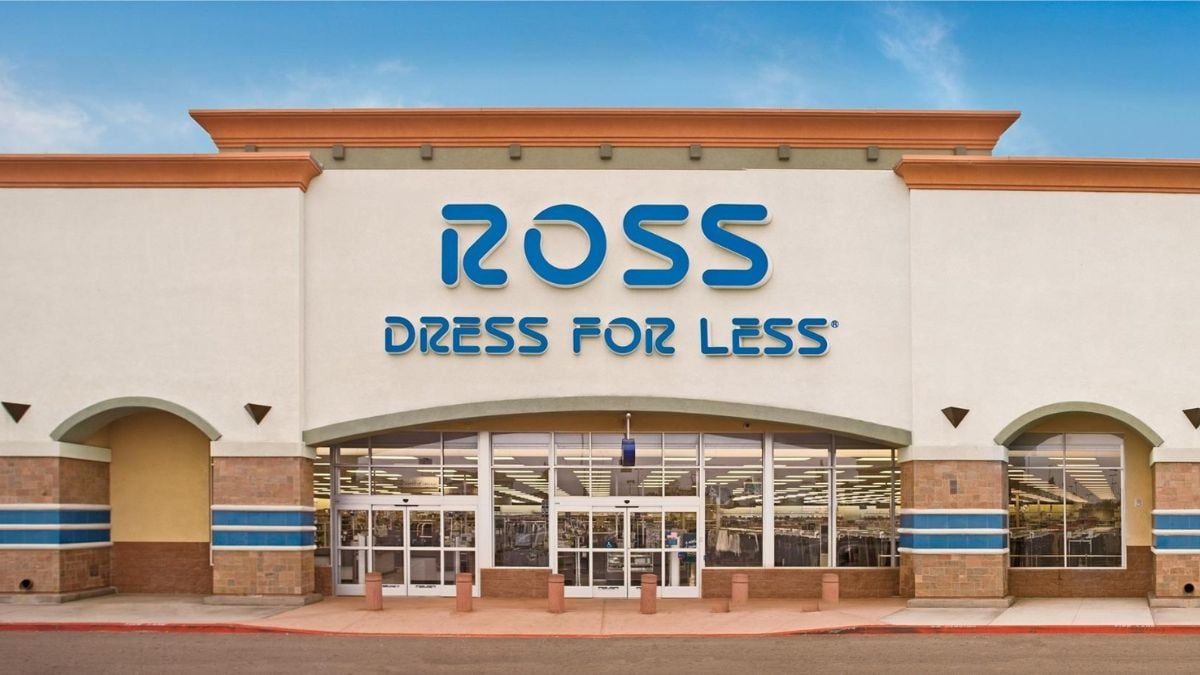
More and more retailers—from supermarkets to sporting goods stores and toy shops—have opted to increase their product prices due to the tariffs imposed by U.S. President Donald Trump. But what will happen with discount stores like Ross Dress for Less? The company has already issued a statement on the matter, and it may not sit well with customers. Here’s what we know.
Will Ross stores raise their prices?
According to Jim Conroy, CEO of Ross, the company may follow other retailers and adjust its prices, although any increases will depend on the business category and whether the item is discretionary or functional in nature. For now, he emphasized that they will work to strike a balance between pricing and reduced merchandise margins.
ALSO READ McDonald’s will close CosMc’s stores! When and where?
Why might Ross stores increase their prices?
Recently, the retail chain stated that it is considering a strategic shift due to stagnant sales. In its latest Q1 2025 earnings report, the company noted that comparable store sales remained flat, while net income was $479 million, nearly 2% lower than the previous year.
In addition, Ross reported a 2.7% year-over-year drop in average customer visits per store—driven not only by prolonged inflation but also by the pressure from tariffs, which the company now sees as a growing threat. Soon, approximately 60 countries are expected to face higher tariff rates.
Conroy noted that over 50% of the goods sold at Ross come from China, one of the countries with the highest tariffs. As a result, it’s likely that these increased costs may be passed on to consumers.
When will Ross stores prices go up?
According to the company, customers may begin to see price increases between June and July of this year.
How many Ross stores are there in the U.S.?
Currently, the company has a total of 2,205 Ross Dress for Less and DD’s Discounts locations in 44 states, the District of Columbia, and Guam.
What can you find at Ross?
The retail chain offers high-quality, seasonal, branded, and designer clothing, accessories, footwear, and home items for the entire family, with savings from 20% to 60% and daily discounts on department store and specialty items.
The company also operates 358 DD’s Discounts stores in 22 states, offering a range of moderately priced high-quality, branded, seasonal clothing, accessories, footwear, and home items for the whole family, with savings from 20% to 70%, moderate discounts on department store items, and regular discounts every day.
Why is Ross cheaper?
The clothing offered in discount stores like Ross Dress for Less typically comes from liquidations or excess inventory. Retailers often have surplus stock that needs to be sold, so they offer it at lower prices. Discount stores purchase this extra inventory directly from manufacturers or other retailers.
Are the items at Ross original?
Yes. The items displayed in the company’s discount stores are not fake or secondhand. In fact, you can find well-known brands like Tommy Hilfiger, Liz Claiborne, Timberland, Quiksilver, and Perry Ellis.
What are tariffs?
Tariffs are taxes imposed on imported goods. These tariffs benefit locally made products by giving them a competitive price advantage over similar imported goods. They also serve as a source of revenue for governments.
ALSO READ Arby’s launches new Steak Nuggets! What are they like and when will they go on sale?
Why did Trump impose tariffs?
President Donald Trump has stated that tariffs are a key part of his economic strategy, aiming to promote manufacturing in the United States, protect jobs, increase tax revenue, and stimulate economic growth.
Trump seeks to revitalize and rebuild the U.S. manufacturing industry, which has lost many jobs over the past 40 years, largely due to the offshoring of labor to lower-wage countries like Mexico or China. Additionally, the president believes that the U.S. faces a significant trade deficit and that other countries are taking advantage by selling their products to American consumers.
Why are the United States and China in a tariff war?
It all began on February 1, when U.S. President Donald Trump announced a 10% tariff on all imports from China, as well as the elimination of the de minimis exemption, which had allowed the Asian country to make certain tax-free imports.
Later, on April 2, Trump ordered a 10% tariff on imports from all countries. Two days after that, China responded by imposing a reciprocal 34% tariff on all U.S. imports.
That was just the beginning. On April 8, Donald Trump increased the tariff on Chinese goods to 84% and reiterated his plan to eliminate the de minimis exemption on May 2. China did not remain idle—it then announced an 84% tariff on U.S. imports. The Trump administration responded by raising its tariffs on Chinese goods to 125%, and China matched the figure with its own 125% tariff on U.S. products.
Which stores have raised their prices?
These are the retailers that have confirmed price increases so far:
- Walmart
- Shein
- Nike
- Adidas:
- Target
- Best Buy
- Mattel









